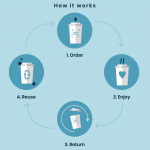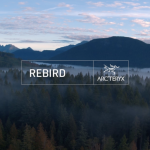August 11, 2020 (Vancouver, B.C.) – As British Columbians, and people around the world, continue to wrestle with the health and economic crises from the COVID-19 pandemic, global economies are looking for recovery solutions—ones that get people back to work and ones that limit carbon production and reduce greenhouse gas emissions (GHGs) while meeting the world’s growing demand for energy. B.C.’s Low Carbon Advantage plan, released today, lays out a pathway for achieving this.
B.C.’s Low Carbon Advantage plan is a key component of the Stronger Tomorrow, Starting Today: An Economic Plan for B.C. Families and Businesses, released by the business community in July.
This plan, developed by a broad group of industry experts working over the last two years with the Business Council of B.C., is focused on how B.C. can show leadership and have an outsized impact on reducing the world’s GHG emissions by becoming a reliable, cost competitive supplier of low carbon energy, commodities and commercial innovation. These exports are key ingredients in the things the world needs to reduce its climate emissions.
If the world bought more B.C. exports, in turn the products we use at home (like electric vehicles, solar panels and smart phones), could all have markedly lower climate changing impacts with B.C., low carbon components inside. In fact, on average our export energy and commodities are half the climate change causing GHG intensity of our competition globally. That is because we have a low carbon advantage here in B.C., one that results in made-in-B.C. products being more climate-friendly than when they are produced elsewhere.
The technical foundation of the Low Carbon Advantage plan represents nearly two years of collaborative effort between the Government of British Columbia and over 50 experts across 30 leading companies and organizations. In November 2018 the B.C. Government and the Business Council of B.C. signed a unique collaborative memorandum of understanding on a Low Carbon Industrial Strategy to outline the goals of the shared work.
This work, including analysis by objective third parties including leading Canadian accounting firm Meyers Norris Penny (MNP), and Le-ef, verified that:
- B.C.’s export commodities are produced with half the climate change-causing GHG intensity of our competition
- Our clean hydroelectricity and renewable power sources, processes, plus our innovation, makes our product low GHG
- B.C. is the only jurisdiction in the world or within Canada with a carbon tax but no protection from the government for our emissions-intensive trade-exposed (EITEs) producers
- The margins of our industrial sectors are significantly lower: 11 per cent to 87 per cent lower when compared to our competitors which deters investment or pushes it elsewhere
These verified disadvantages were ones the industry faced before the economic shock of the COVID-19 pandemic, which has only intensified both the negative impacts and the urgency to address them in order to secure the competitiveness of B.C. industries in the global post-COVID-19 race to rebuild economies.
“Climate action does not stop at our provincial borders,” said Susannah Pierce, Director of Corporate Affairs, LNG Canada. “The benefit of export industries like LNG is that they create jobs locally and bring economic stability to British Columbia communities, while helping to reduce global GHG emissions. It’s a great example of B.C.’s low carbon advantage.”
While work with the Government of B.C. on solutions to address how to take action stalled prior to the pandemic, the business community proceeded to develop a plan deploy climate solutions in its economic recovery plans.
“B.C.’s Low Carbon Advantage plan, released today, identifies how we can “build back better,” said Greg D’Avignon, President and CEO, Business Council of B.C. “Our work with experts in the B.C. Government and industry confirmed there is an opportunity for B.C. to become a verified, competitive low-carbon supplier of the energy, commodities and innovations the world needs and will consume in the years ahead. Acting on this plan means investment that creates high paying jobs for people and new innovations that benefit British Columbians and addresses the global climate challenge.”
The plan lays out a path forward to maximize our low carbon advantage, with 21 actions in six areas, including:
- Transform the regulatory system to create efficient and effective regulatory processes that provide global leadership in sustainability performance, cutting complexity not corners
- Develop a clear business investment strategy that demonstrates B.C. is open for investment and markets the low carbon advantage we have from the commodities we produce
- Embrace carbon offsets and market mechanisms as compliance tools in the B.C. climate framework with investment in nature-based solutions
- Endorse protection for emissions-intensive trade-exposed production from the full carbon tax consistent with federal policy in order to prevent carbon leakage
- Refocus current infrastructure/capital plans to support Canada’s export economy and trade patterns and further the build out of clean infrastructure
- Support the further adoption and diffusion of technology and innovation across industries
The single most important action the Government of B.C. can take in the near-term is to adjust tax policy to endorse protection for EITE producers, which is what the plan calls for.
“B.C.’s industrial sectors have long-supported climate solutions, but what we need now is for the Province to put EITE producers on the same playing field as other places with a carbon tax like California and Norway,” said Greg D’Avignon. “We need the Province to put EITE protections in place to send a clear signal that it welcomes investment and wants to maximize our low carbon advantage.”
There are two major risks if protections for EITE producers are not put in place:
- The risk that the world loses global GHG savings from B.C. products
- The risk to our own economy, as businesses that support direct and indirect jobs and communities around the province are at risk if they can’t compete with other companies that do have these supports. If B.C. products aren’t competitive in the marketplace, the products will come from elsewhere, from countries that produce them with a higher carbon content. This is called carbon leakage.
“B.C. has the people, the know-how and the resources to provide the low-carbon forest products that are increasingly in demand around the world”, said Susan Yurkovich, President and CEO, BC Council of Forest Industries. “Our high-quality products from sustainably managed forests are helping to fight climate change while also supporting good, family-supporting jobs across our province. We see more opportunities ahead, but to maximize them and the benefits to British Columbians, we need to be able to successfully compete with suppliers around the globe.”
Read a summary of B.C.’s Low Carbon Advantage plan as well as the detailed plan and MNP technical materials at lowcarbonadvantage.ca.
Media Contacts:
Laura Cropper, Coast Communications
778.323.3827
Colin Wong, Business Council of British Columbia
604.764.8605











